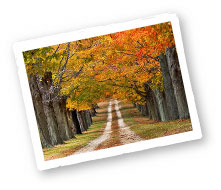Denver Parks
When Denver was founded in 1858, the city was little more  than a dusty collection of buildings on a long, grassy plain with a few contorted cottonwood and willow trees on riverbanks. As of 2006, Denver has over 200 parks, from small miniature parks all over the city to the giant 314 acre City Park. The city of Denver also has 29 recreation centers providing places and programming for resident’s recreation and relaxation.
than a dusty collection of buildings on a long, grassy plain with a few contorted cottonwood and willow trees on riverbanks. As of 2006, Denver has over 200 parks, from small miniature parks all over the city to the giant 314 acre City Park. The city of Denver also has 29 recreation centers providing places and programming for resident’s recreation and relaxation.
Many of Denver’s parks were acquired from state lands in the late 19th and early 20th centuries. This coincided with the City Beautiful movement, and legendary Denver mayor Robert Speer (1904-12 and 1916-18) set out to expand and beautify the city’s parks. Reinhard Schuetze was the city’s first landscape architect, and he brought his German-educated landscaping genius to Washington Park, Cheesman Park, and City Park among others. Speer used Schuetze as well as other landscape architects such as Frederick Law Olmsted, Jr. and Saco Rienk DeBoer to design not only parks such as Civic Center Park, but many city parkways and tree-lawns. All of this greenery was fed with South Platte River water diverted through the city ditch.
In addition to the parks within Denver itself, the city acquired land for mountain parks starting in the 1910s. Over the years, Denver has acquired, built and maintained approximately 14,000 acres (56 km²) of mountain parks, including Red Rocks Park, which is known for its scenery and musical history revolving around the unique Red Rocks Amphitheatre. Denver also owns the hill on which the Winter Park Resort ski area is operated in Grand County, 67 miles west of Denver. City parks are important places for both Denverites and visitors, inciting controversy with every change. Denver continues to grow its park system with the development of many new parks along the Platte River through the city, and with Central Park and Bluff Lake Nature Center in the Stapleton neighborhood redevelopment. All of these parks are important gathering places for residents and allow what was once a dry plain to be lush, active, and green.
Since 1974, Denver and the surrounding jurisdictions have rehabilitated the urban South Platte River and its tributaries for recreational use by hikers and cyclists. The main stem of the South Platte River Greenway runs along the South Platte from Chatfield Reservoir 35 miles into Adams County in the north. The Greenway project is recognized as one of the best urban reclamation projects in the U.S., winning, for example, the Silver Medal Rudy Bruner Award for Urban Excellence in 2001.
A problem, from the view of city officials, is that the city owns 29 recreation centers, many built in the 1950s and 1960s. Square dances and community meetings were what planners envisioned back then, not the mega complexes with water sports and big gyms that the public wants now. Attendance fees pay about 20 percent of the $11.6 million annual operating cost. Chantal Unfug, senior adviser to the manager of parks and recreation, said the city can’t afford to continue spending money for the current system.